Server manager properties 260330-Server manager edit deployment properties
If you need, add line in your "serverproperties" or delete "#" from "serverdefaultsproperties" on line "#reportdatedateFormat=MMddyyyy" \config\serverproperties The directory where you have installed ESM in my system it is /apps/arcsight/managerManagerproperties Specifies session manager properties Superelements sessionmanager (sunwebxml) Subelements The following table describes subelements for the managerproperties element Table C–85 managerproperties Subelements Element Required Description property (with attributes) zero or more Specifies a property, which has a name and Super simple to do, we just need to reference the properties of our object, and set them accordingly $CMCollectionComment = "This collection contains all Windows Server 12 R2 clients" We've updated the collection comments Or have we?
1
Server manager edit deployment properties
Server manager edit deployment properties- SQL Server actively manages these resource properties These properties are set automatically by SQL Server and should not be modified using Failover Cluster Manager SQL Server automatically manages an availability group's Possible and Preferred Owner properties The current primary replica is always set as the availability group resource's Possible Owner and also Your screenshot looks like a Server Manager glitch to me Try restarting the Server Manager or the whole server to see if that fixes the issue One more alternative is to switch to the new Windows Admin Center https//wwwstarwindsoftwarecom/blog/windowsadmincenterforwindowsserver19gettingstarted for server management purposes
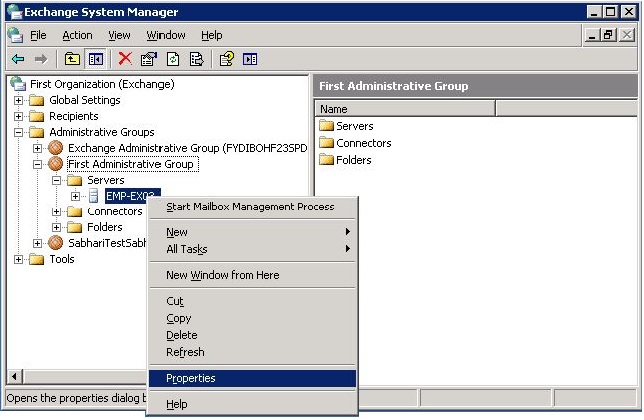



Configuring Exchange Server For Auditing Manageengine Exchange Reporter Plus
In the Referenced Object Manager, click Add or Edit To add or modify an email server In the Email Server Properties dialog box, next to Email Server Name, give the server a unique display name This name is necessary to distinguish between multiple email servers Under SMTP Settings, define your email server and port Only specify a port On the Start menu, point to All Programs, point to Microsoft SQL Server, point to Configuration Tools, and then click SQL Server Configuration Manager In SQL Server Configuration Manager, select SQL Server Services In the details pane, rightclick SQL Server (), and then select Properties In the SQL Server () Properties dialog box, change Server Manager is a management console in Windows Server that helps IT professionals provision and manage both local and remote Windowsbased servers from their desktops Server Manager is installed by default with all editions of Windows Server and can be used to manage server core options The Server Manager was first introduced with Windows
Specify a name to this group policy Right click and edit the group policy In the group policy management editor, navigate to Computer Configuration > Policies > Administrative Templates > System > Server Manager On the right pane look for setting named Do not display Server Manager automatically at logon Right click the policy setting andProvide administrative credentials for the server not joined to the domain To add a nondomain joined server or a Workgroup server to Server Manager, you must use DNS or Import option in the Add Servers Wizard Then you must rightclick on the selected server and select "Manage As" from the context menu This displays a Windows SecurityClick the Servers tab Click the Type column to display the details pane Click Manage Server, Manage Group, or Manage Cluster On the Settings page, click the Properties tab Click either Custom Properties or Discovered Properties To view discovered properties, select Discovered Properties and then click Enable AutoDiscovery Figure 1
Well, you can The Tools dropdown is just a UI to expose the shortcuts in the "Administrative Tools" folder (C\ProgramData\Microsoft\Windows\Start The downloaded file has the extension tgz For Windows, use win64 The downloaded file has the extension zip With Data Server Manager 213 and above, you use setup scripts for both fresh installs and upgrades Running these scripts when upgrading creates backups of the following essential directories config If you've used Windows Server 12 or 12 R2, you've seen that Server Manager is quite different from previous versions but did you know you can edit the 'Tools' menu in Server Manager?



View System Properties On Windows Server 16



Windows 12 Do Not Show Server Manager At Login Spjeff
Hi All I cannot seem to find the Server Manager console in windows server 12 essentials I know it exists cause i came across it the other day I would like to configure some advance features and need to access this as well as the standard dashboard Cheers You can go the admin tools route or also try hit the start button, rightclick on I have seen a similar case that the properties showing unknown Check if it helps Windows Server 12 R2 Server Manger "unknown" error https//socialtechnetmicrosoftcom/Forums/enUS/43cbb3e594d04ab0b78d2738c1d65de6/windowsserver12r2servermangerunknownerror?forum=winserver8gen If you really want to use this approach, do the following In Active Directory Users and Computers, open the Properties dialog box for the user that is




Using Service Manager



Configure Server 12 R2 Server Schooltechnician Co Uk
Runtime Manager enables you to define and configure server properties These properties are defined as keyvalue pairs and are used by the JVM where the server is running For example, you can set a property called ENV=qa that enables you to specify the environment of the server Both are exposed in the DNS Management snapin tool DNS server properties are exposed by rightclicking on the DNS server icon as shown in Figure 1 Zone properties, on the other hand, are found if you rightclick on a particular zone name under Forward or Reverse Lookup Zones Here are a couple of ways to keep them straight Launch the Server Manager Click on Manage Next, click on Server Manager Properties Under the Server Manager Properties window that opens, locate the option for Do not start Server Manager automatically at logon Check the box next to it Click on OK That does it You have successfully disabled the Server Manager pop up
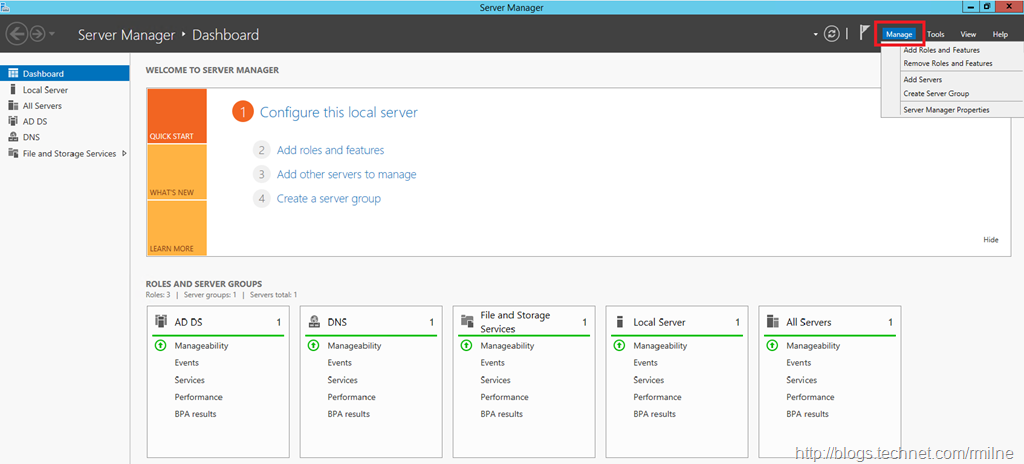



How To Hide Server Manager At Logon 250 Hello




How To Disable Server Manager From Starting Up Automatically In Windows 12 R2
Server Manager prompted to overwrite before "Apply" changes in Server Manager !newPromptpng! On the Manage menu in the Server Manager console, click Server Manager Properties In the Server Manager Properties dialog box, specify a time period, in minutes, for the amount of elapsed time you want between refreshes of the data that is displayed in Server Manager The default is 10 minutes Click OK when you are finished Refresh limitationsSelect Edit Properties from the dropdown menu to the right of
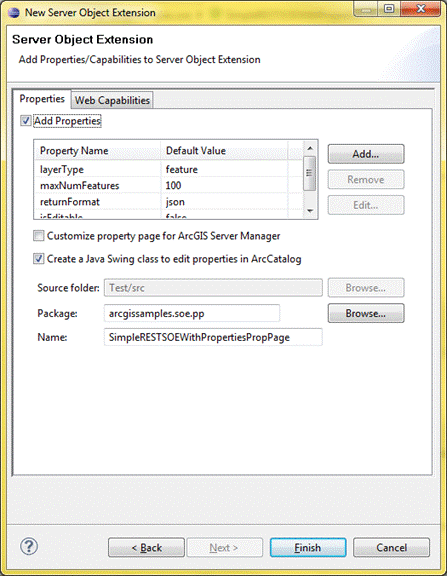



Walkthrough Creating Custom Property Pages For Arcgis Desktop Arcobjects 10 4 Help For Java Arcgis For Desktop




Configuring Exchange Server For Auditing Manageengine Exchange Reporter Plus
On the Windows start screen, click the Server Manager tile On the Manage menu, click add Servers Do one of the following On the active directory tab, select servers that are in the current domain Press Ctrl while selecting to select multiple servers Click the rightarrow button to move selected servers to the selected listModifying runtime server configuration properties In some cases, you might need to make changes to the IBM® Business Process Manager runtime configuration, such as modifying proxy settings, managing Enterprise Content Manager server settings, or modifying the Process Server connection properties Configuration updates are made either in the 100Customxml file or byServer Management Servers don't normally need too much over sight from owners or admins, but some times issues can arise because of bugs or troublesome players Here are a few tips on how to do a few basic management things The #servertalk and #technicalhelp channels on the official Eco Discord server are good places to ask for help




Install Terminal Services On Windows Server 12 R2 Windows Forum




How To Disable Server Manager Dashboard At Logon In Window Servers Youtube
Go to the WebLogic Admin Server console and navigate to Environment > Servers Verify that the Server Manager Console installer created a a new J2EE Server and that the state of that server is RUNNING The following screen shows an example Go to Deployments and verify that the Server Manager Console is installed On the computer that you want to manage remotely, open Server Manager, if it is not already open On the Windows taskbar, click Server Manager On the start screen, click the Server Manager tile In the Properties area of the Local Servers page, click the hyperlinked value for the remote management property Do one of the following, and then click OKHow to Open Server Manager via Command Prompt 1 Open Command Prompt (Start > Run > cmd), or PowerShell 2 Type ServerManager and press Enter Server Manager should open That was easy!




Solved Windows Server 16 Server Manager Updates




How To Classify Files With File Server Resource Manager Itpro Today It News How Tos Trends Case Studies Career Tips More
The following table describes the Microsoft SQL Server configuration properties Property Description User name Name of the SQL Server user account used to connect to the Microsoft SQL Server database The Metadata Manager Service uses SQL Server authentication to connect to the Microsoft SQL Server database Password Summary Seconds executed 315 No errors detected (w) Unable to get system disk properties 0xD IOCTL_STORAGE_QUERY_PROPERTY Disk Cache Had some errors in the checksur log, but was able to fix Won't let me download upates either As this is the mail server, restarts and shutdowns are dicey Could not discover the state of the system Select the new collection by clicking it in the list of Collections on the left of Server Manager;




Disable Server Manager At Startup For All Users Windowsserver Charbel Nemnom Mvp Mct Ccsp Cloud Cybersecurity




Remove Pinned Server Manager Icon From Start Menu For New Users On Server 16 Jan Hendriks Blog
Click Save Properties or Delete Properties, depending on what you want to change Add your aliases to user registries After the EIM properties have been modified, you must use System i® Navigator to set up and administer EIM domain servers You must add aliases to user registries that are defined for the EIM domainMirthproperties file was updated properly, no corruption found Even when a corrupted mirthproperties file is in place (copy from older build), was still be able to log into Administrator Console, Exception in Client (java) logWhen I check the properties, it doesn't show in the console Why is this?




How To Manage Users On Windows Server 08 Hostway Help Center
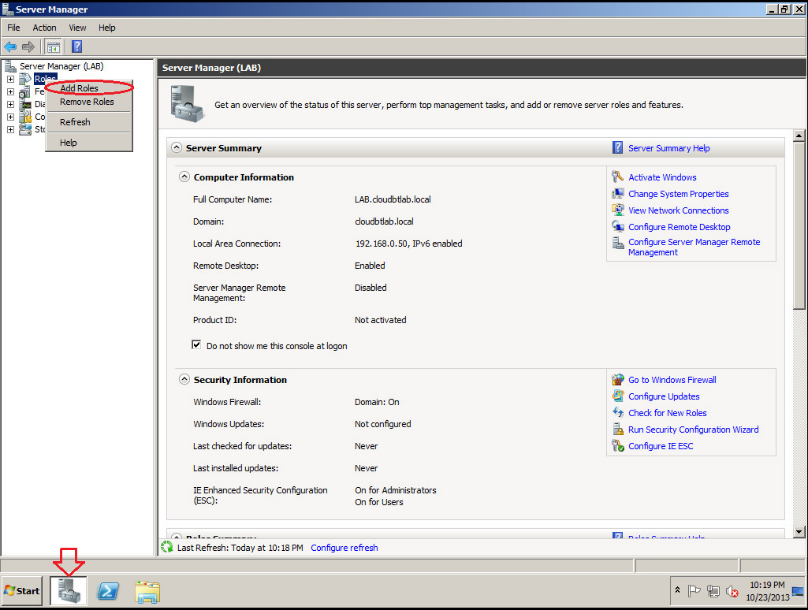



How To Install Configure Windows Server Update Service Wsus Network Wrangler Tech Blog
Amwebserverport This is the web server port used by Applications Manager to connect to the browser amsslport Keys to enable SSL37 Install the Server Manager Management Console for JD Edwards EnterpriseOne Tools (Release 91 Update 2) 371 Installing the Management Console as an OC4J (Standalone Application Server) 3711 Prerequisites for OC4J 3712 Running the OC4J Installer for the Server Manager Console 3713 Verifying the OC4J InstallationServer Manager allows the administrator to do the following Add and remove roles and features from the server Monitor and manage the server Administer the roles and features on the server In effect, Server Manager is a onestop shop for all the administrator management and monitoring needs The features of Server Manager are available via




Install And Configure Ipam In Windows Server 19




Installing Active Directory On Windows Server 16 Peter Whyte Dba Blog
Introduction Node Manager is a WebLogic Server utility that enables you to start, shut down, and restart Administration Server and Managed Server instances from a remote location Server instances in a WebLogic Server production environment are often distributed across multiple domains, machines, and geographic locations Press Windows Key R Type sysdmcpl Click OK If you want to make a shortcut to it on your desktop use the following path C\Windows\System32\sysdmcpl Either method will get you quick access to your System Properties I was writing a blog post on setting environment variables and it was annoying me having to go to such lengths to get toTo open Remote Desktop Licensing Manager, click Start, point to Administrative Tools, point to Remote Desktop Services, and then click Remote Desktop Licensing Manager Rightclick the license server for which you want to change properties, and then click Properties Connection Method to select a different method for communicating with the



Disable Server Manager At Start Up For All Users Askme4tech




Disable Server Manager Automatic Launch Super Tek Boy
Server Manager Properties How to do it To disable Server Manager for all servers and all users, you can leverage Group Policy under Computer Configuration Administrative Templates System Server Manager Doubleclick on Do not display Server Manager automatically at logon and Set to Enabled and click OK Do not display Server Manager 1 To change the Do not Start manager automatically at logon setting, you can set a registry value (DWORD) Key HKLM\SOFTWARE\Microsoft\ServerManager Value DoNotOpenServerManagerAtLogon a value of 1, disabled the startup after logon I just checked my old ServerInstall scripts and found this for IE Enhanced Security ConfigurationSpecify the startup arguments that Node Manager will use to start a Managed Server in the Server—>Configuration—>Remote Start tab for the Managed Server If you do not specify startup arguments for a Managed Server in this fashion, Node Manager uses its own properties as defaults to start the Managed Server




Managing Servers Running Windows Server 12 Microsoft Press Store




Server Management In Windows Server 8 Developer Preview Nicholas Dille
Since adding Server Manager/RSAT on my Windows 10 machine, I cannot view RDS resources correctly Specifically, I cannot see session collections, any of them This machine was upgraded from Windows 81 and the Server Manager settings were migrated as well I would like to reset Server Manager Hi, Thanks for your postYou could checkAdministrators and service owners can use ArcGIS Server Manager to edit the properties of a service To do so, follow these steps Open Server Manager for the ArcGIS Server site that contains your service and sign in If you need help with this step, see Log in to Manager Click Services > Manage ServicesFrom Anypoint Platform, select Runtime Manager Click the Applications tab Click the Status column to display the details pane Click Manage Application On the Settings page, click the Properties tab Figure 1 The screenshot shows ( 1) the Properties tab, ( 2) the Key and Value fields, and ( 3) the menu on the application Settings page




Windows Server 19 Active Directory Add Group Accounts Server World



Server Manager
The Configuration Manager icon in the control panel will show me if the PC is compliant or not and report that back to the sccm server On the SCCM Server i go to monitoring > Deployments to see the status hope this helps You can see how the Baseline Configurations is like setting a Group Policy for the clients flag ReportThree Ways for Disabling Server Manager from Startup for Windows 12/Windows 12 R2 Table of Contents 1Using Server Manager 2Using GPEDITMSC for local GPO 3 Using GPMC for GPO 1Using Server Manager Go to Manage > Server Manager Properties > Do not start Server Manager automatically at logon 2Using GPEDITMSC for local GPOThe following table describes changes to Server Manager advanced properties in Data Replication 963 Determines whether the Server Manager dynamically allocates threads for running replication tasks, processing incoming requests, and sending messages to other Server Manager instances Options are Do not allocate Server Manager threads




Remote Desktop Services Rds On Windows Server 19 Ajni It



3
This article applies to Windows Server 16By editing AMServerProperties file and AvailabilityTestsconf file (available under /conf/ directory), you can change the default server settings used in ManageEngine Applications Manager Key Description; Follow below steps Create below folder structure inside hybris config directory 2 Place your properties in each one of local files as per environment related values The property which have same values across environment will go to common local property file 3 Create a buildxml file inside config project and copy below content 4



Prevent Server Manager Starting At Logon To Windows Server 16




Disable Server Manager At Logon In Windows Server 12 R2 Dimitris Tonias
Username used by the manager to authenticate to the database server Must match an existing database account Note that the Deep Security Manager database permissions will correspond to this user's permissions For example, if you choose a database account with readonly privileges, the Deep Security Manager will not be able to write to the database Mandatory



How To Turn Off The Automatic Display Of Server Manager At Logon



Solved Service Sharing Properties Ownership Changes Seemi Esri Community



Freekb Set The Hostname And Primary Dns Suffix Name In Windows Server
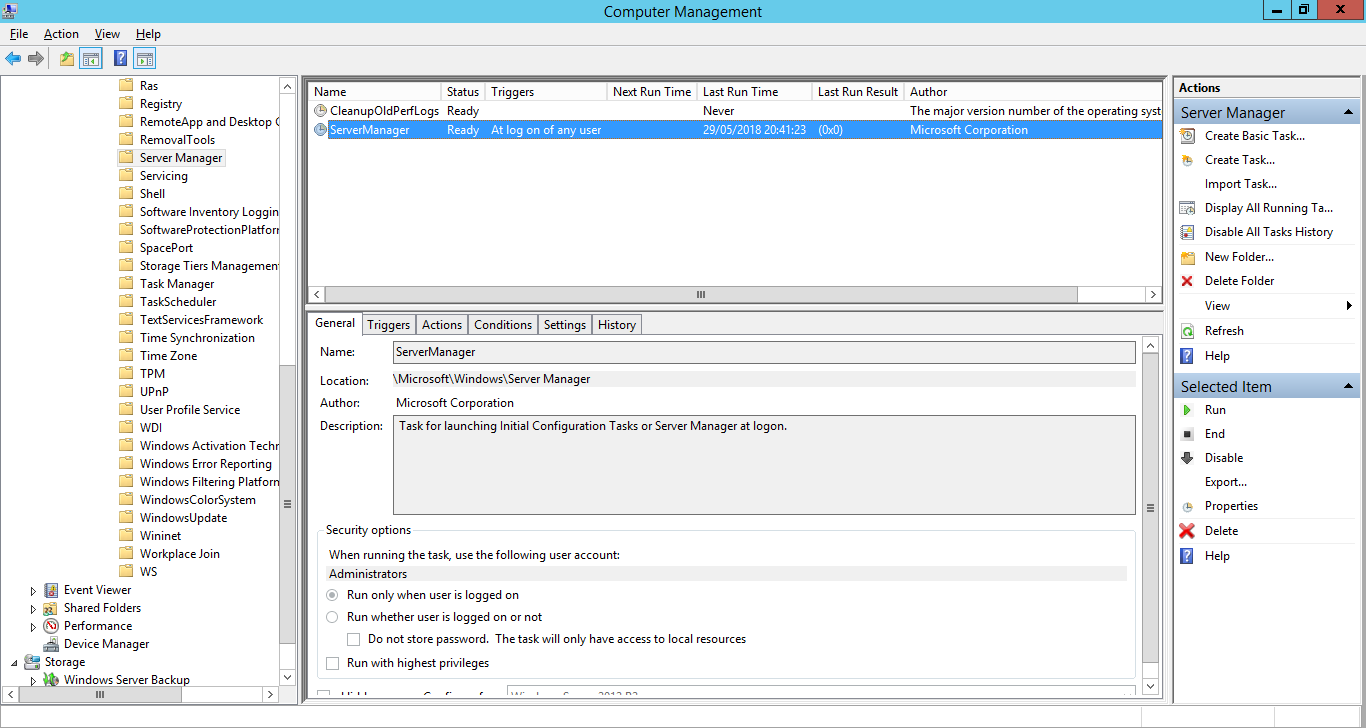



Powershell To Stop Server Manager Loading Azurecurve




Remote Desktop Services Rds On Windows Server 19 Ajni It




Welcome To Server Manager 12 Style Microsoft Tech Community



Prevent Server Manager Starting At Logon To Windows Server 16




Chapter 1 Activity 1 2 Reviewing System Properties And Exploring Server Manager Youtube
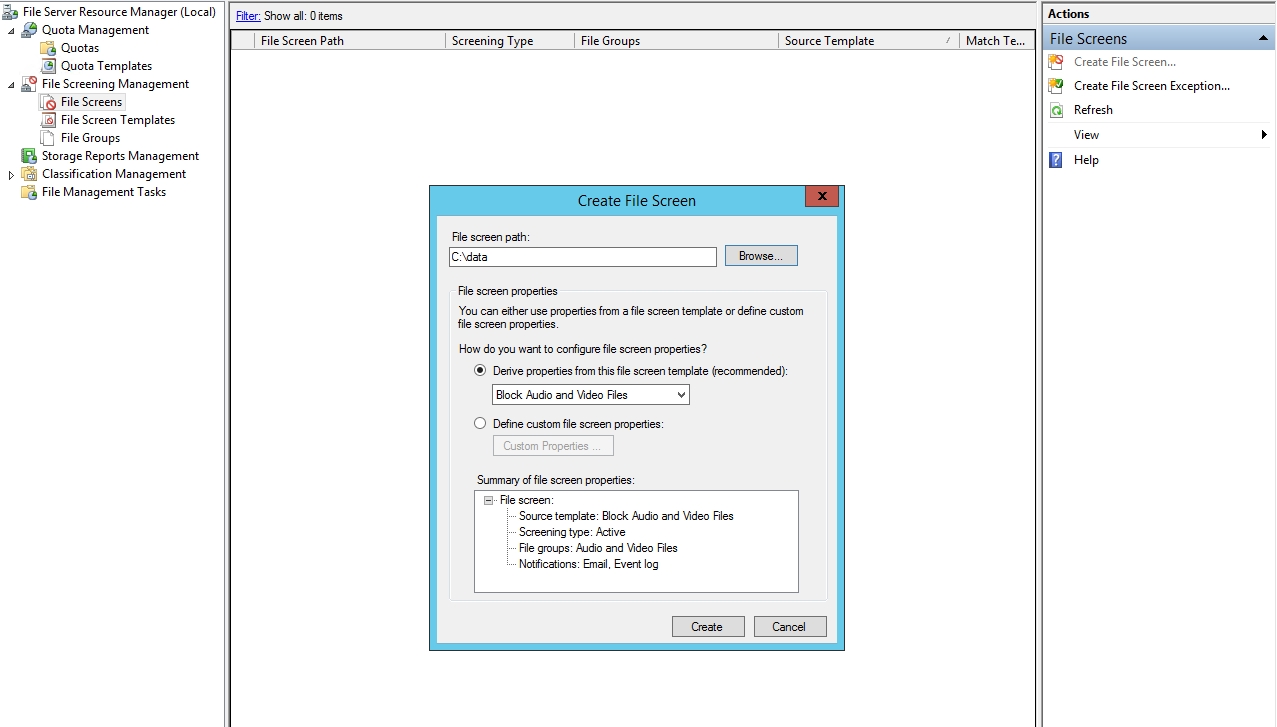



How To Use The File Server Resource Manager In Windows Server Redmondmag Com




Server Manager In Windows Server 08 R2 Part 1 The Things That Are Better Left Unspoken



1




Disable Server Manager At Startup For All Users Windowsserver Charbel Nemnom Mvp Mct Ccsp Cloud Cybersecurity
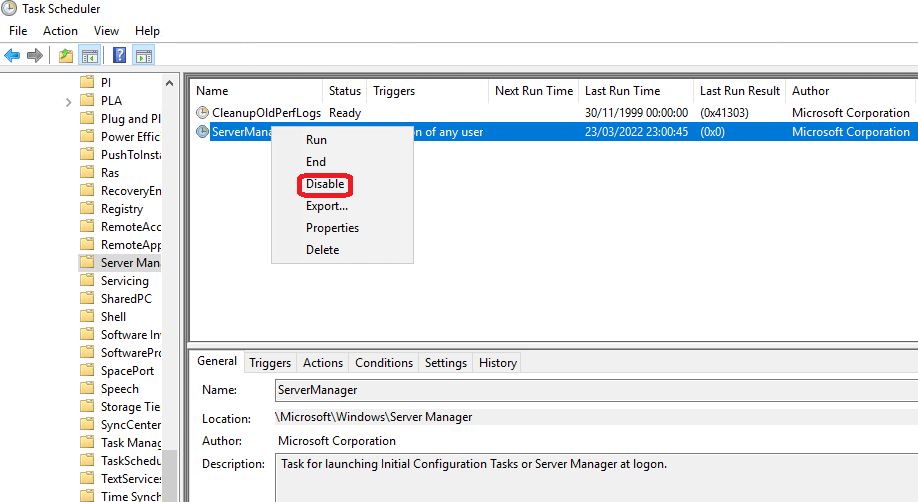



Disable Server Manager At Startup Rdcloudcompute
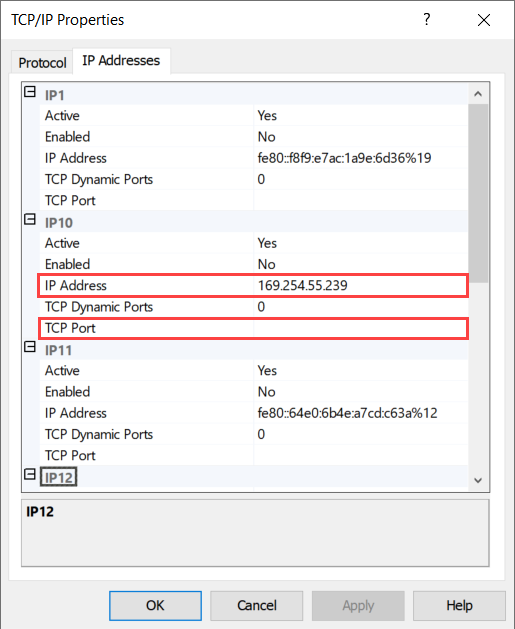



How To Use Sql Server Configuration Manager



Install And Configure Iis Web Server On Windows Server Vgeek Tales From Real It System Administration Environment




Overview Of The Task Manager In Windows Server 12 4sysops




Welcome To Server Manager 12 Style Microsoft Tech Community




Server Manager Remote Management Learning It




Stop Server Manager On Startup For All Users Morgantechspace
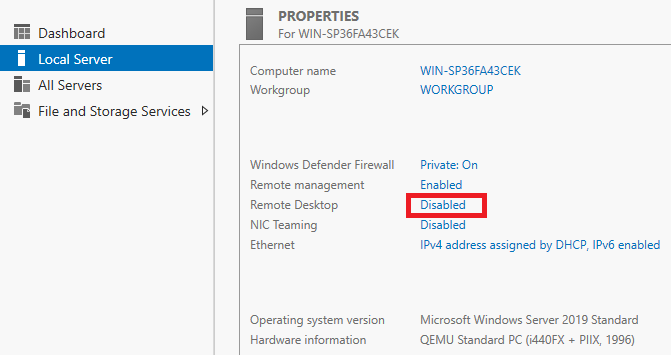



Windows Server 19 Rdp Remote Desktop Tutorial Transip




How To Change Refresh Interval Of Server Manager In Windows Server 12 Tech Solutions
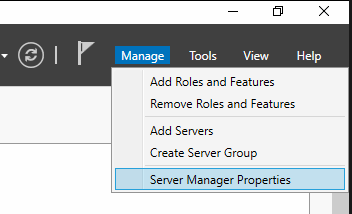



Windows Server 16 Disable Server Manager On Startup Techygeekshome
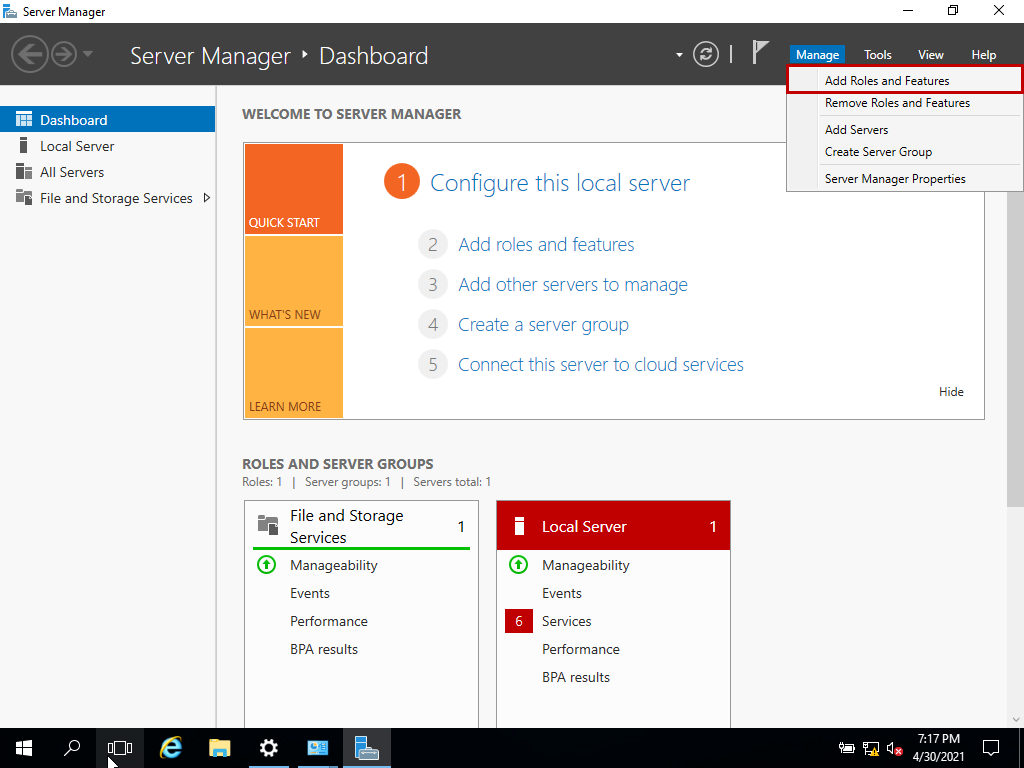



Managing The Windows Internal Database Wid




The Microsoft Platform Adding Custom Rdp Properties In Windows Server 12 Rds Vdi Environments



Management How To Changes For Rds In Windows Server 12 And 12r2 Technet Articles United States English Technet Wiki
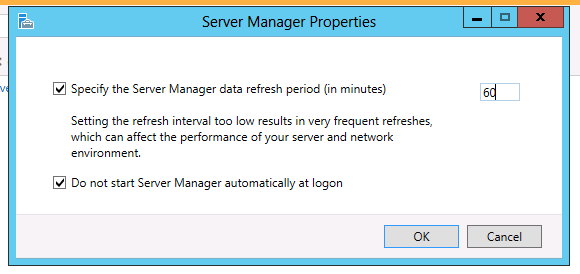



How To Fix Server Manager Not Responding In Windows Server 12 On Hyper V Mike Says Meh




Windows Server 12 R2 Rds Role Installation Thinmanager Knowledge Base




Reviewing System Properties And Exploring Server Chegg Com




Disable Server Manager Dashboard On Logon By Gururaja Medium




How To Change Refresh Interval Of Server Manager In Windows Server 12 Tech Solutions
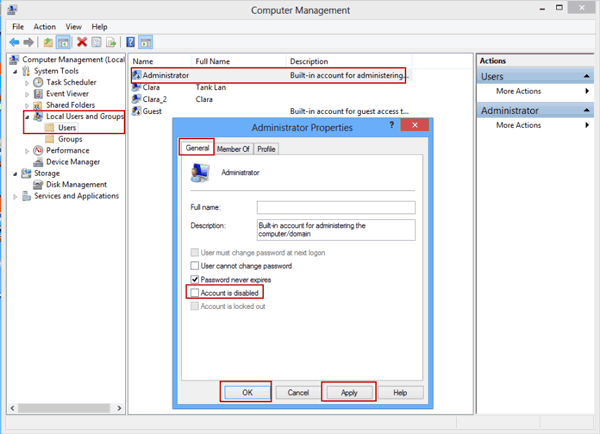



How To Enable Or Disable Windows Server 12 R2 Built In Administrator



How To Automatically Hide Configure This Local Server In Server Manager A Geeks World




Windows Server System Center Ramblings




Disable The Server Manager Dashboard On Windows Server 12 And Windows Server 12 R2 Scom Maintenance Mode Scheduler



Prevent Server Manager Starting At Logon To Windows Server 16



Management How To Changes For Rds In Windows Server 12 And 12r2 Technet Articles United States English Technet Wiki




Windows Server 16 Initial Settings Add Local User Server World




Disable Server Manager At Logon In Windows Server 12 R2 Dimitris Tonias



Unknown Status For Local Server Properties




Metalogix Archive Manager For Files 8 1 1 Iis Installation Guide




How To Configure Nic Teaming On Windows Server




Distributed Transactions Under Application Server In Windows Server 12



1
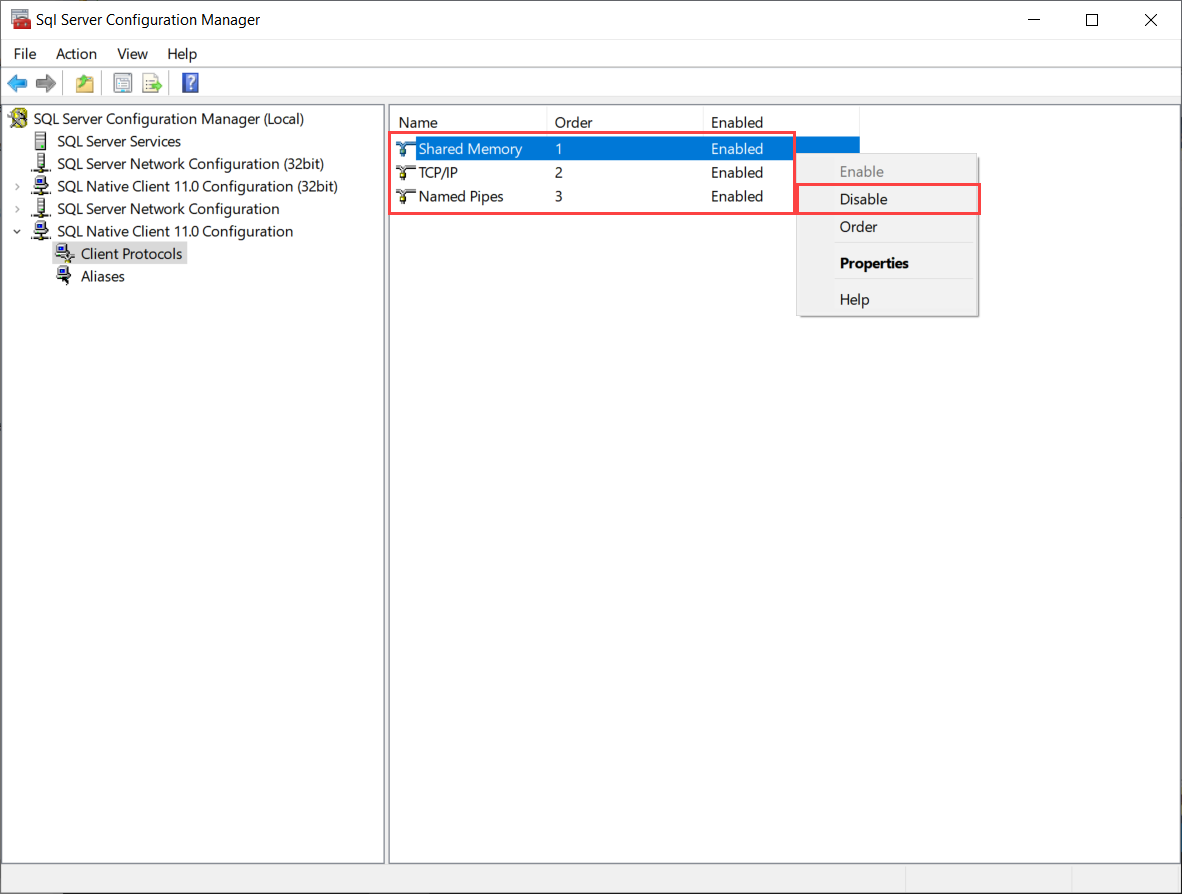



How To Use Sql Server Configuration Manager




Server Manager What Is It And How To Use It Itechguides Com




How To Reinstall Server Manager And Disable Server Manager At Startup For All Users And Login User Learn Solve It



Install And Configure Certificate Authority Ca On Microsoft Windows Server With Group Policy Vgeek Tales From Real It System Administration Environment
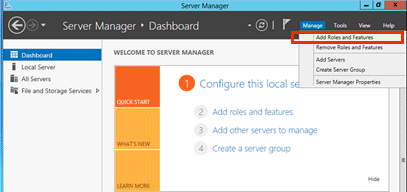



Enabling Remote Desktop Services In Windows Server 12 Ifix 6 1 Documentation Ge Digital
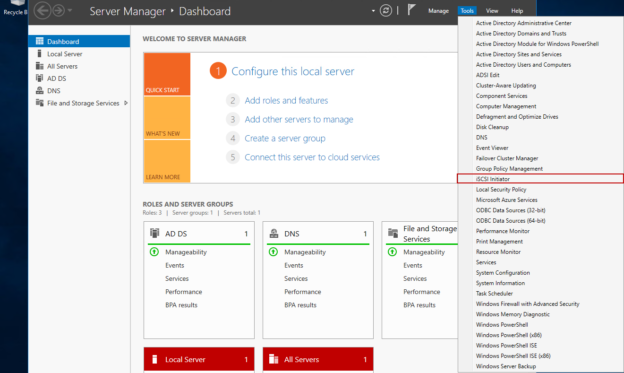



How To Configure An Iscsi Initiator On Windows Server 16
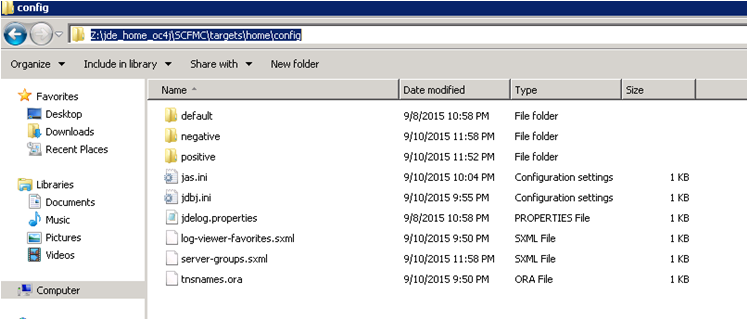



Server Manager Users
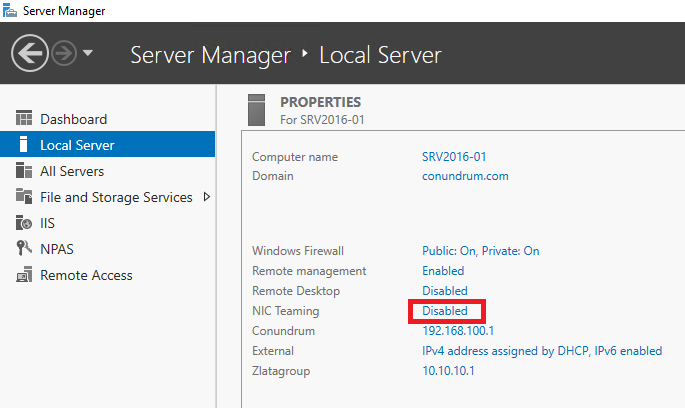



Using Nic Teaming With Windows Server 16 Starwind Blog




How To Classify Files With File Server Resource Manager Itpro Today It News How Tos Trends Case Studies Career Tips More




39 How To Configure And Enable Quota On Shared Folder Using Fsrm In Windows Server 16 Youtube
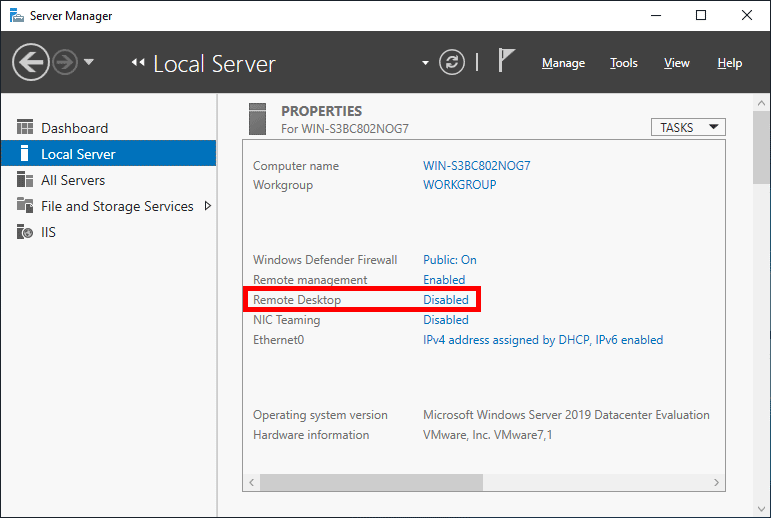



How To Enable Remote Desktop In Windows Server 19 Rootusers
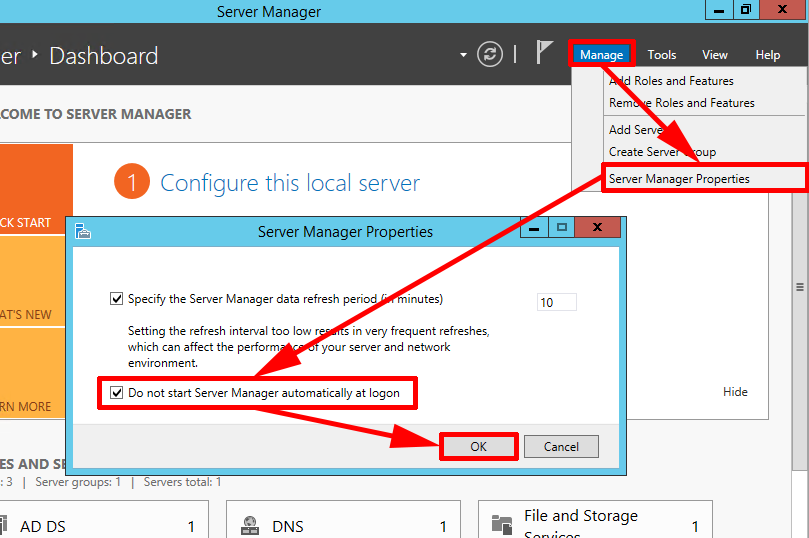



Windows Server Stop Server Manager From Launching Petenetlive




How To Do It Microsoft Iis 10 0 Cookbook Book
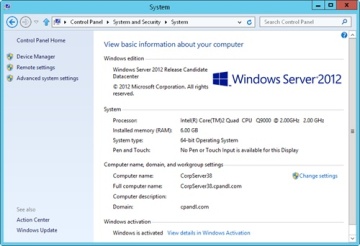



Managing Servers Running Windows Server 12 Microsoft Press Store
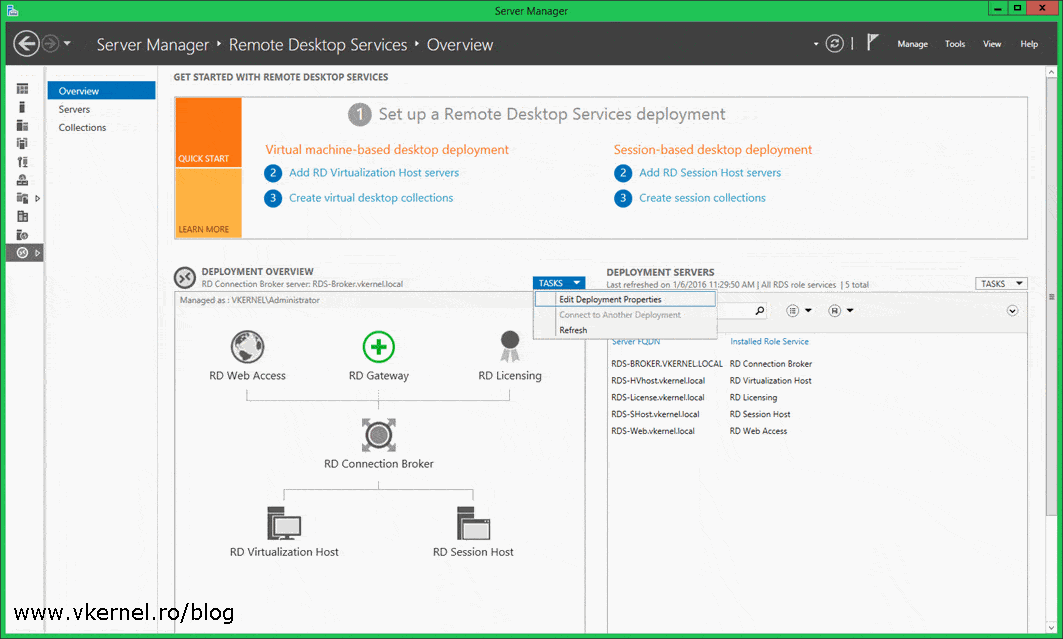



Deploy And Configure A Windows Server 12 R2 Rd License Server Adrian Costea S Blog




Open Server Manager An Overview Sciencedirect Topics
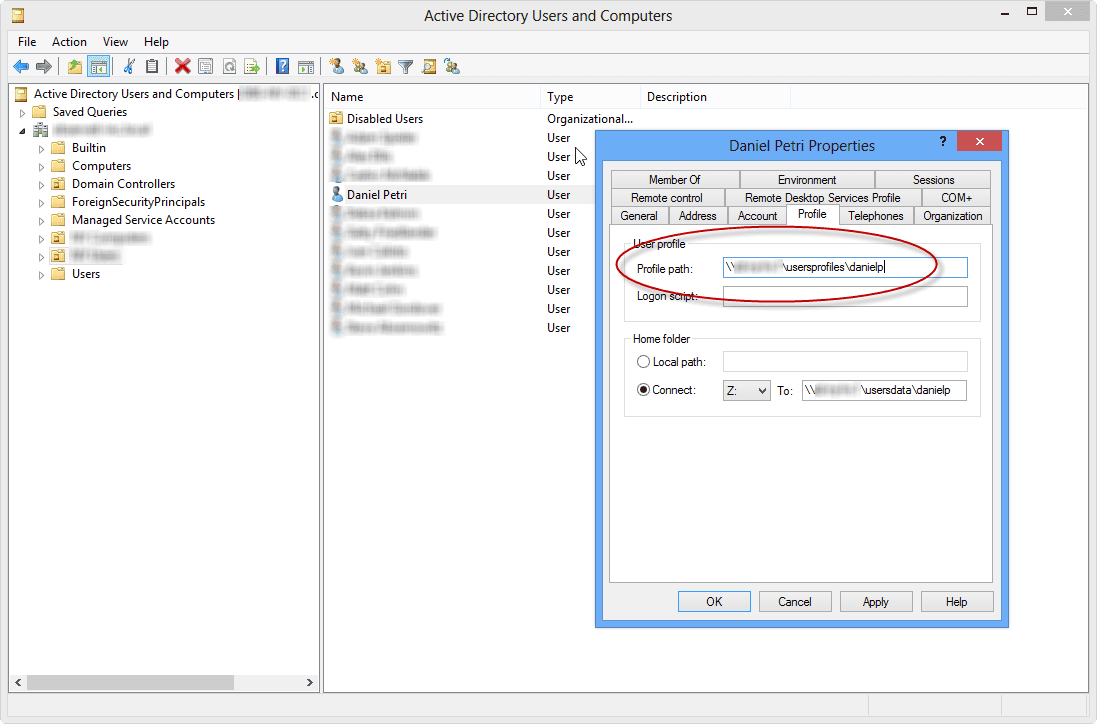



Import And Export Lists Of Servers With Windows Server 12 Server Manager Petri It Knowledgebase




How To Reinstall Server Manager And Disable Server Manager At Startup For All Users And Login User Learn Solve It




A Quick Guide To Server Manager For Windows Server 08
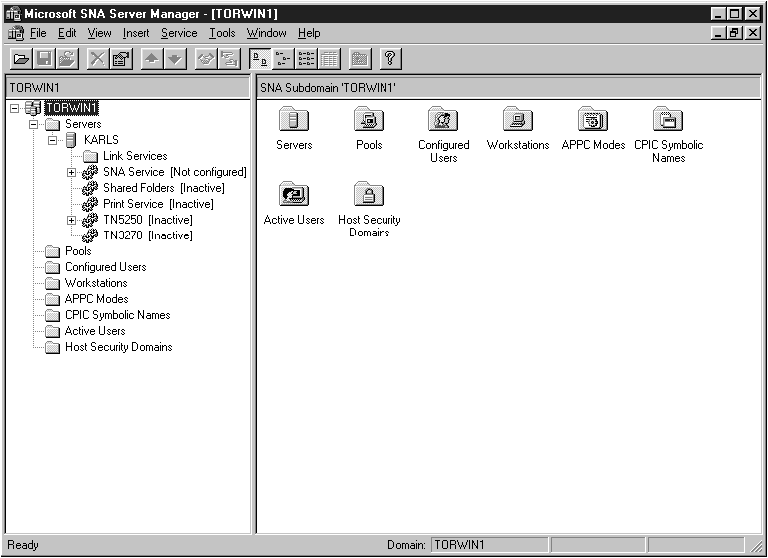



Quick Beginnings For Db2 Connect Enterprise Edition




Import A Profile Schema Using Commerce Server Manager




Windows Server 12 Server Manager The Cloud Eh
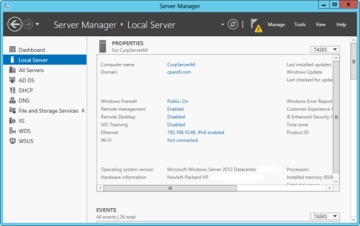



Managing Servers Running Windows Server 12 Microsoft Press Store
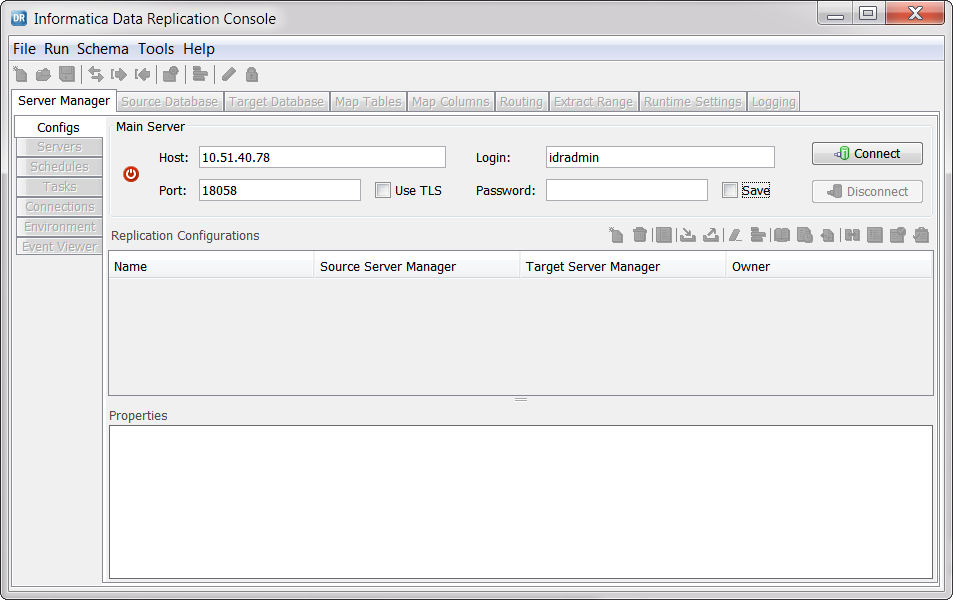



Connecting To The Server Manager Main Server




Interbase Server Manager Interbase




How To Change Refresh Interval Of Server Manager In Windows Server 12 Tech Solutions




Windows Server 19 Initial Settings Change Admin User Name Server World



Ip Configuration Of Windows Server Machine 2 Open Server Download Scientific Diagram




How To Use Sql Server Configuration Manager




Configure Remote Desktop Services Collections In Windows Server 12 R2 Petri It Knowledgebase
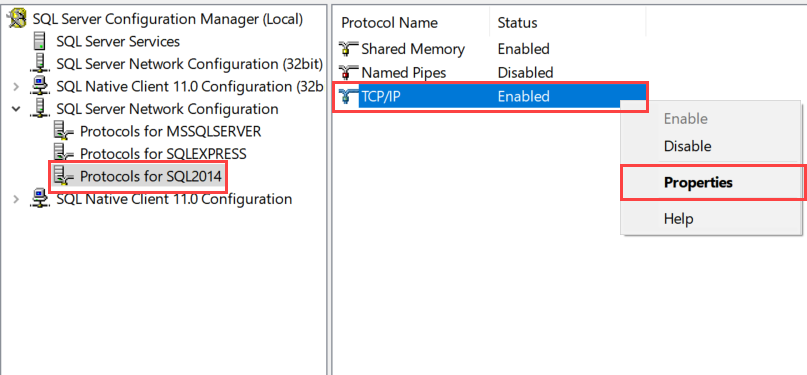



How To Use Sql Server Configuration Manager




5 Microsoft Dns Servers Basic Forwarding Configuration Nhs Digital




Adding Jdbc Properties For A Database Connection In Data Server Manager Dsm
コメント
コメントを投稿